9 Books Published by University of Oklahoma Press on AALBC — Book Cover Collage
 The 1921 Tulsa Race Massacre: A Photographic History
The 1921 Tulsa Race Massacre: A Photographic History
by Karlos K. HillUniversity of Oklahoma Press (Mar 18, 2021)
Read Detailed Book Description
On the evening of May 31, 1921, and in the early morning hours of June 1, several thousand white citizens and authorities violently attacked the African American Greenwood District of Tulsa, Oklahoma. In the course of some twelve hours of mob violence, white Tulsans reduced one of the nation’s most prosperous black communities to rubble and killed an estimated 300 people, mostly African Americans. This richly illustrated volume, featuring more than 175 photographs, along with oral testimonies, shines a new spotlight on the race massacre from the vantage point of its victims and survivors.
Historian and Black Studies professor Karlos K. Hill presents a range of photographs taken before, during, and after the massacre, mostly by white photographers. Some of the images are published here for the first time. Comparing these photographs to those taken elsewhere in the United States of lynchings, the author makes a powerful case for terming the 1921 outbreak not a riot but a massacre. White civilians, in many cases assisted or condoned by local and state law enforcement, perpetuated a systematic and coordinated attack on Black Tulsans and their property.
Despite all the violence and devastation, black Tulsans rebuilt the Greenwood District brick by brick. By the mid-twentieth century, Greenwood had reached a new zenith, with nearly 250 Black-owned and Black-operated businesses. Today the citizens of Greenwood, with support from the broader community, continue to work diligently to revive the neighborhood once known as “Black Wall Street.” As a result, Hill asserts, the most important legacy of the Tulsa Race Massacre is the grit and resilience of the Black survivors of racist violence.The 1921 Tulsa Race Massacre: A Photographic History offers a perspective largely missing from other accounts. At once captivating and disturbing, it will embolden readers to confront the uncomfortable legacy of racial violence in U.S. history.
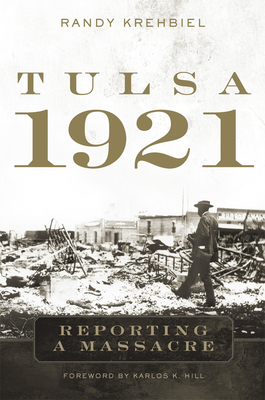 Tulsa, 1921: Reporting a Massacre
Tulsa, 1921: Reporting a Massacre
by Randy KrehbielUniversity of Oklahoma Press (Sep 19, 2019)
Read Detailed Book Description
In 1921 Tulsa’s Greenwood District, known then as the nation’s "Black Wall Street," was one of the most prosperous African American communities in the United States. But on May 31 of that year, a white mob, inflamed by rumors that a young Black man had attempted to rape a white teenage girl, invaded Greenwood. By the end of the following day, thousands of homes and businesses lay in ashes, and perhaps as many as three hundred people were dead.
 Most American: Notes from a Wounded Place
Most American: Notes from a Wounded Place
by Rilla AskewUniversity of Oklahoma Press (Jun 08, 2017)
Read Detailed Book Description
2018 PEN America Literary Award Finalist!
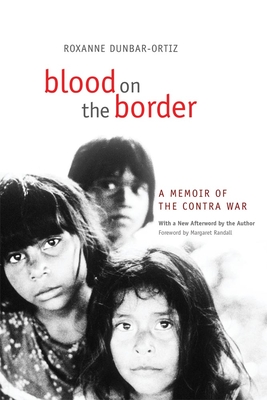 Blood on the Border: A Memoir of the Contra War
Blood on the Border: A Memoir of the Contra War
by Roxanne Dunbar-OrtizUniversity of Oklahoma Press (Aug 03, 2016)
Read Detailed Book Description
Human rights activist and historian Roxanne Dunbar-Ortiz has been described as "a force of nature on the page and off." That force is fully present in Blood on the Border, the third in her acclaimed series of memoirs. Seamlessly blending the personal and the political, Blood on the Border is Dunbar-Ortiz’s firsthand account of the decade-long dirty war pursued by the Contras and the United States against the people of Nicaragua.
With the 1981 bombing of a Nicaraguan plane in Mexico City—a plane Dunbar-Ortiz herself would have been on if not for a delay—the US-backed Contras (short for los contrarrevolucionarios) launched a major offensive against Nicaragua’s Sandinista regime, which the Reagan administration labeled as communist. While her rich political analysis of the US-Nicaraguan relationship bears the mark of a trained historian, Dunbar-Ortiz also writes from her perspective as an intrepid activist who spent months at a time throughout the 1980s in the war-torn country, especially in the remote northeastern region, where the Indigenous Miskitu people were relentlessly assailed and nearly wiped out by CIA-trained Contra mercenaries. She makes painfully clear the connections between what many US Americans today remember only vaguely as the Iran-Contra "affair" and ongoing US aggression in the Americas, the Middle East, and around the world—connections made even more explicit in a new afterword written for this edition.
A compelling, important, and sobering story on its own, Blood on the Border offers a deeply informed, closely observed, and heartfelt view of history in the making.
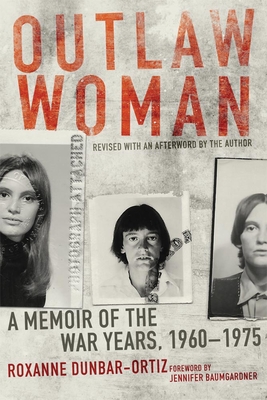 Outlaw Woman: A Memoir of the War Years, 1960-1975
Outlaw Woman: A Memoir of the War Years, 1960-1975
by Roxanne Dunbar-OrtizUniversity of Oklahoma Press (Mar 20, 2014)
Read Detailed Book Description
In 1968, Roxanne Dunbar-Ortiz helped found the Women’s Liberation Movement, part of what has been called the second wave of feminism in the United States. Along with a small group of dedicated women in Boston, she produced the first women’s liberation journal, No More Fun and Games.
Dunbar-Ortiz was also an antiwar and anti-racist activist and organizer throughout the 1960s and early 1970s and a fiery, tireless public speaker on issues of patriarchy, capitalism, imperialism, and racism. She worked in Cuba with the Venceremos Brigade and formed associations with other revolutionaries across the spectrum of radical politics, including the Civil Rights Movement, Students for a Democratic Society, the Revolutionary Union, the African National Congress, and the American Indian Movement. Unlike most of those involved in the New Left, Dunbar-Ortiz grew up poor, female, and part-Native American in rural Oklahoma, and she often found herself at odds not only with the ruling class but also with the Left and with the women’s movement.
Dunbar-Ortiz’s odyssey from Oklahoma poverty to the urban New Left gives a working-class, feminist perspective on a time and a movement that forever changed American society. In a new afterword, the author reflects on her fast-paced life fifty years ago, in particular as a movement activist and in relationships with men.
 Harpsong
Harpsong
by Rilla AskewUniversity of Oklahoma Press (Apr 30, 2009)
Read Detailed Book Description
Harlan Singer, a harmonica-playing troubadour, shows up in the Thompson family’s yard one morning. He steals their hearts with his music, and their daughter with his charm. Soon he and his fourteen-year-old bride, Sharon, are on the road, two more hobos of the Great Depression, hitchhiking and hopping freights across the Great Plains in search of an old man and the settlement of Harlan’s long-standing debt. In this moving, redemptive tale inspired by Oklahoma folk heroes, Rilla Askew continues her exploration of the American story. Harpsong is a novel of love and loss, of adventure and renewal, and of a wayfaring orphan’s search for home—all set to the sounds of Harlan’s harmonica.
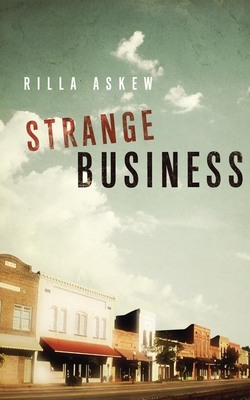 Strange Business
Strange Business
by Rilla AskewUniversity of Oklahoma Press (Mar 15, 2009)
Read Detailed Book Description
The strangeness of life and death play out in a fictional American small town
Lyla Mae Muncy meets her first love at Falls Creek Baptist Assembly Summer Bible Church Camp—and regrets it on their awkward first date. After years of being nagged about lumpy gravy, abused wife Lois pulls out a shotgun to wrap up breakfast her way. In a tender moment, an old man speaks from beyond the grave about his wife’s final goodbye at his funeral. Experience, memory, and town-consciousness bind this collection of ten stories spanning twenty-five years in fictitious Cedar, Oklahoma. From the fears and discoveries of childhood, through the revelations of adolescence, into the troubled years of adulthood and decline into old age and death, Rilla Askew uncannily makes each of her characters’ experiences our own.
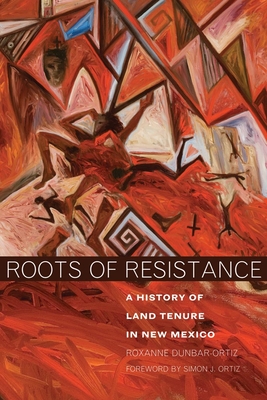 Roots of Resistance: A History of Land Tenure in New Mexico
Roots of Resistance: A History of Land Tenure in New Mexico
by Roxanne Dunbar-OrtizUniversity of Oklahoma Press (Sep 14, 2007)
Read Detailed Book Description
An updated edition of a seminal work on the history of land ownership in the Southwest
In New Mexico—once a Spanish colony, then part of Mexico—Pueblo Indians and descendants of Spanish- and Mexican-era settlers still think of themselves as distinct peoples, each with a dynamic history. At the core of these persistent cultural identities is each group’s historical relationship to the others and to the land, a connection that changed dramatically when the United States wrested control of the region from Mexico in 1848.
In Roots of Resistance—now offered in an updated paperback edition—Roxanne Dunbar-Ortiz provides a history of land ownership in northern New Mexico from 1680 to the present. She shows how indigenous and Mexican farming communities adapted and preserved their fundamental democratic social and economic institutions, despite losing control of their land to capitalist entrepreneurs and becoming part of a low-wage labor force.
In a new final chapter, Dunbar-Ortiz applies the lessons of this history to recent conflicts in New Mexico over ownership and use of land and control of minerals, timber, and water.
 Red Dirt: Growing Up Okie
Red Dirt: Growing Up Okie
by Roxanne Dunbar-OrtizUniversity of Oklahoma Press (Feb 01, 2006)
Read Detailed Book Description
A classic in contemporary Oklahoma literature, Roxanne Dunbar-Ortiz’s Red Dirt unearths the joys and ordeals of growing up poor during the 1940s and 1950s. In this exquisite rendering of her childhood in rural Oklahoma, from the Dust Bowl days to the end of the Eisenhower era, the author bears witness to a family and community that still cling to the dream of America as a republic of landowners.
